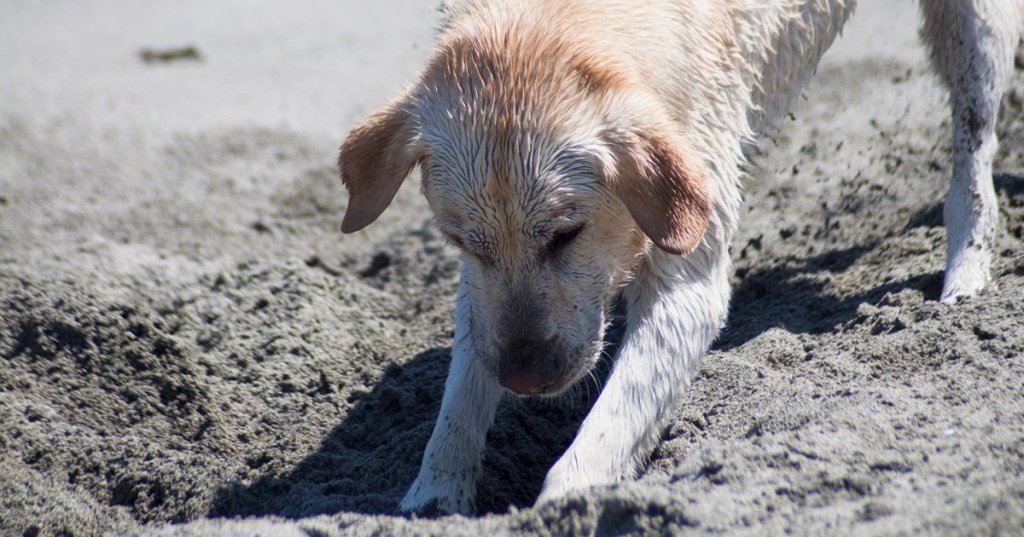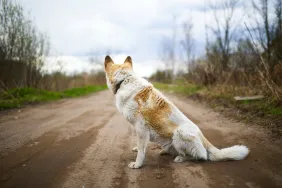Dogs need to dig. There are a dozen good canine reasons for digging: digging warming pits and cooling hollows, excavating feline feces, grubs, roots and rodents, digging to escape, digging out of boredom, digging for fun, and of course, the quintessential canine bona fide reason – burying bones and then, digging them up again. Also please bear in mind, many dogs dig from boredom of their solitary confinement in the backyard because the owner dare not leave the dog indoors. Often housetraining and chewtoy training offer simple solutions to digging and barking problems.
When you cannot supervise your puppy, confine it to an area where it cannot dig, for example indoors or to an outdoor run. When you can work with the pup, actively redirect its digging activities to an appropriate area, e.g., a digging pit.
A dog digging pit
From your viewpoint, the pup is digging in the wrong place and so to be fair, provide a location that you find appropriate and then teach your puppy to use it. A digging pit is much like a child’s sand pit. To teach your pup to enjoy digging in its pit, keep it well stocked with all sorts of goodies: stashes of kibble, the odd training treat, chewtoys (yes, we need them outdoors as well), tennis balls, squeaky toys, and maybe even a cow’s femur. Once your pup learns its digging pit is a virtual treasure trove, it will much rather dig there than in the rest of the yard. What’s so marvelous about unearthing a root or a dead slug, when there are bones and chunks of freeze-dried liver to be found in the pit? I mean, what’s the point of prospecting for gold in New Jersey, when it was discovered in California? Digging in the pit quickly becomes self-reinforcing, and finding treasure is especially rewarding. Even so, continue to praise and reward your pup each time it digs in its pit.
Appropriate digging may also be taught via a passive learning process. Confined to a concrete run with a digging pit at one end, a potential digger soon develops the good habit of digging in its pit (because there is nowhere else to dig). After a couple of weeks, the door of the run may be left open and the dog will likely seek out its digging pit whenever it feels an excavatory urge.
If you plan to leave your dog unattended in the yard for long periods of time, then beforehand you must spend some time with the dog outside, teaching it the rules of the yard, for example, to not even walk on the garden, let alone dig in it. Should you see your dog about to dig in the lawn, the instructive reprimand “Digging Pit!” adequately informs the dog that it is doing something wrong and where it should be digging.
Excerpted from How to Teach An Old Dog New Tricks, by Ian Dunbar.
Ian Dunbar is a veterinarian and animal behaviorist, founder of the Association of Pet Dog Trainers, and the author and star of numerous books and videos on dog behavior and training. He lives in Berkeley, California with his wife, trainer Kelly Dunbar, and their three dogs. The Dunbars are contributing editors to DogTime.









